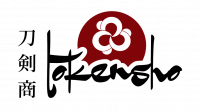It can’t be done they said …
All Katana forged in Japan must be forged from Tamahagane! Everybody knows that, right ? To be honest, this was also my first reaction when I met Chris Loeber back in 2019.We both had been commenting on some “Katana” related subreddit, trying to keep people from blowing their money on the overpriced junk that gets cranked out by sweatshops in cities like Longquan while the old art of forging Katana in Japan is in commercial decline. Not only because of the competition from China, but also due to a lack of interest on their domestic market and the high cost that put real Japanese swords out of reach for most practitioners of arts like Battodo or Tameshigiri. And Chris and Shin had decided to change that. Both the cost of “Wako”, the iron-sand-based raw material that comes out of the NBTHK’s tatara furnaces, as well as the labor intense steps required to create the “Sunobe” from which the Katana is finally forged, contribute a lot of cost to the end product. What if one was able to skip those steps and instead forge a Katana from modern steel but with all the knowledge and experience of a true Katana-Kaji ?
The steel
The steel traditionally used for forging Katana in Japan is Tama-Hagane, a steel made from iron sand (satetsu) using a smelting process to get rid of the unwanted admixtures. Tamahagane is heterogeneous and is partly characterised by a high carbon content. It is also low in undesirable admixtures such as sulphur and phosphorus. But it is hardly first choice for a smith for a Katana in the 21st century.
Matsukaze’s blade is thus forged from Shirogami III (Shirogami-Ko) steel. Shirogami is a very pure Japanese high carbon steel with the least amount of impurities in the form of Sulfur (S) and Phosphorus (P). Carbon (C) is at 0.8%. It is similar to AISI W108 and clearly superior to steel commonly used for practitioners blades like AISI 1095. The name white paper steel results from the white paper manufacturers used when wrapping the blade after forging. It hardens to a Rockwell hardness between 58 and 63.
Forging the blade
Shirogami-Ko has a narrow range of temperatures for hardening and requires an experienced blacksmith. All Matsukaze blades are constructed, like the majority of historic Katana, in Kobuse around a Shingane of mild steel. Please check out our blog if you want to learn more about the actual forging process. The blade you will order will be forged to your needs and specifications regarding its dimensions (Nagasa, Sori, Moto- and Sakihaba as well as Moto- and Sakigasane). We are also offering a range of different of different Hamon-Types. But please note that very intricate Hamons will cost extra and you would be well advised to listen to our smith if he has any concerns regarding your choices. While we are currently concentrating on Katana, we are planning to also offer Wakizashi and Tanto in the course of 2023, so you will be able to build your own Daisho.
Polishing the blade.
All Matsukaze blades are meticulously hand-polished on natural stones by an experienced Togishi. We checked out a number of different Togishi in Japan, Europe and the US and finally ended up with two that we found to deliver the best results at reasonable cost. Although the steel that is being used is obviously non-folded, our polisher Christophe managed to bring out a fine and dense Hada in the Jigane. Since Shirogami-steel is significantly harder than traditional Tamahagane, it takes a lot of elbow-grease to polish. We generally tend to go for a “Iai-polish” instead of a full “show-polish”, but, of course, our polisher is also willing to put in extra work (at extra cost) to go the full nine yards to a full “nihonto-class” togi, if you so choose.
